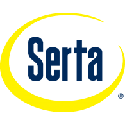ANSI/ISO Barcode Print Quality Parameters
There are nine attributes (or parameters) that are evaluated through a single scan path, which are derived from a scan reflectance profile. Five of these attributes are subject to pass/fail criteria (A or F). Each of the remaining four attributes are graded (A, B,C,D,F). The overall grade for the scan reflectance profile (or single scan path) is the lowest grade for any of the nine attributes. The formal verification of a UPC symbol requires ten scan reflectance profiles spaced along the symbol. The overall symbol grade is obtained by averaging the grades of the individual scan reflectance profiles.
Edge Determination
When the verifier is unable to find an appropriate number of bars and spaces, it reports an edge determination failure. The verifier must find 59 elements (30 bars and 29 spaces) for a version A.
There are several reasons why a symbol may appear to have too many or too few elements. Excessive bar growth (ink spread) may cause the smaller spaces to become so narrow that the verifier can no longer see them. In this case, the verifier would report fewer than 59 elements (for a Version A symbol). A different reason for failure is when one of the narrow bars is so weakly printed that the verifier cannot see it, resulting in 57.
Minimum Reflectance
The darkest bar must have a reflectance less than half of the background. This attribute is judged on a pass/fail basis. A failing grade for minimum reflectance will most often indicate that the bars should be printed darker or in a color that appears darker under red light.
Symbol Contrast
The blackest possible bars printed on the whitest possible surface would have a 100% contrast. Practical printing of the UPC symbol on commercial materials results in less than 100% contrast. When the contrast becomes too low, scanners may have difficulty distinguishing the bars from the spaces; thus, higher contrast is desirable. Symbol contrast is graded A through F.
A low contrast grade indicates that either the bars are too light (not enough ink or ink not dark enough), the background is too dark, or both. Because the measurements are made with red light, it can be informative to visually inspect the symbol through a red transparency. When viewed in this fashion, the bars should appear to be much darker than the spaces. Generally speaking, the background (spaces) should be white or one of the warm colors (red, orange, yellow) and the bars should be black, brown, blue or green.
Minimum Edge Contrast
The attribute of minimum edge contrast is graded on a pass/fail basis. This parameter measures the smallest value for edge contrast in a scan reflectance profile between a bar and space.
Modulation
Scanners and verifiers perceive the narrow spaces to be less white than the wide spaces. Similarly, but to a lesser extent, the narrow bars in a symbol look less black than the wide bars. This diminished intensity of narrow elements as compared to that of wide elements is called modulation.
The most probable reason for a low modulation grade is ink spread, which reduces the width and intensity of the single module spaces within the symbol.
Defects
Printing defects are of two types, voids and spots. Voids are light areas within the bars. Spots are dark areas in the spaces. Defects are undesirable because the scanner may become confused and think that a defect is an additional bar or space within the symbol. Symbols which yield profiles with poor defect grades can be examined with a good quality magnifier. The defects will be clearly visible. Usually, defects are voids that can be reduced or eliminated by increasing the amount of ink (or equivalent). Less often, excessive pigment or dirt may be deposited in the spaces, with resultant spots or inclusions.
Quiet Zone
UPC symbol design mandates a quiet zone, or area of uniform light contrast, adjacent to the outer edges of the left and right hand guard bars. Printing in the quiet zone, using overwrap in a manner that affects the restricted area, and placing the symbol near the edge of a package, are common causes for failure to meet quiet zone specifications.
Decode
Dimensional errors in printing a UPC symbol can make it difficult or impossible to scan. A verifier applies specific rules to the sequence of bars and spaces to decode them into a series of digits and guard bars. When the verifier is able to decode a symbol including its guard patterns, and when the check digit is consistent with the other 11 digits, the decode attribute passes with a grade of A; otherwise, the grade is F.
If all scan reflectance profiles for a symbol receive passing grades, but fail decode, the symbol is probably incorrectly encoded. It is reasonable to suspect that all or many of the symbols which were created by the same equipment in a similar time frame may also be defective. When only one out of several profiles fails to decode, the cause is usually a localized blemish in the symbol that can be spotted with a magnifier.
Decodability
Decodability is a graded attribute that measures how near the scan reflectance profile is to approaching decode failure. Symbols which are printed to a high degree of dimensional accuracy will exhibit high decodability grades.
One common reason for low decodability grades is ragged, uneven bar edges. Another reason for low decodability is excessive bar growth (ink spread), which also tends to adversely affect modulation and edge determination. The creation of barcodes using an improperly designed graphics based software system is a likely cause of low decodability.





